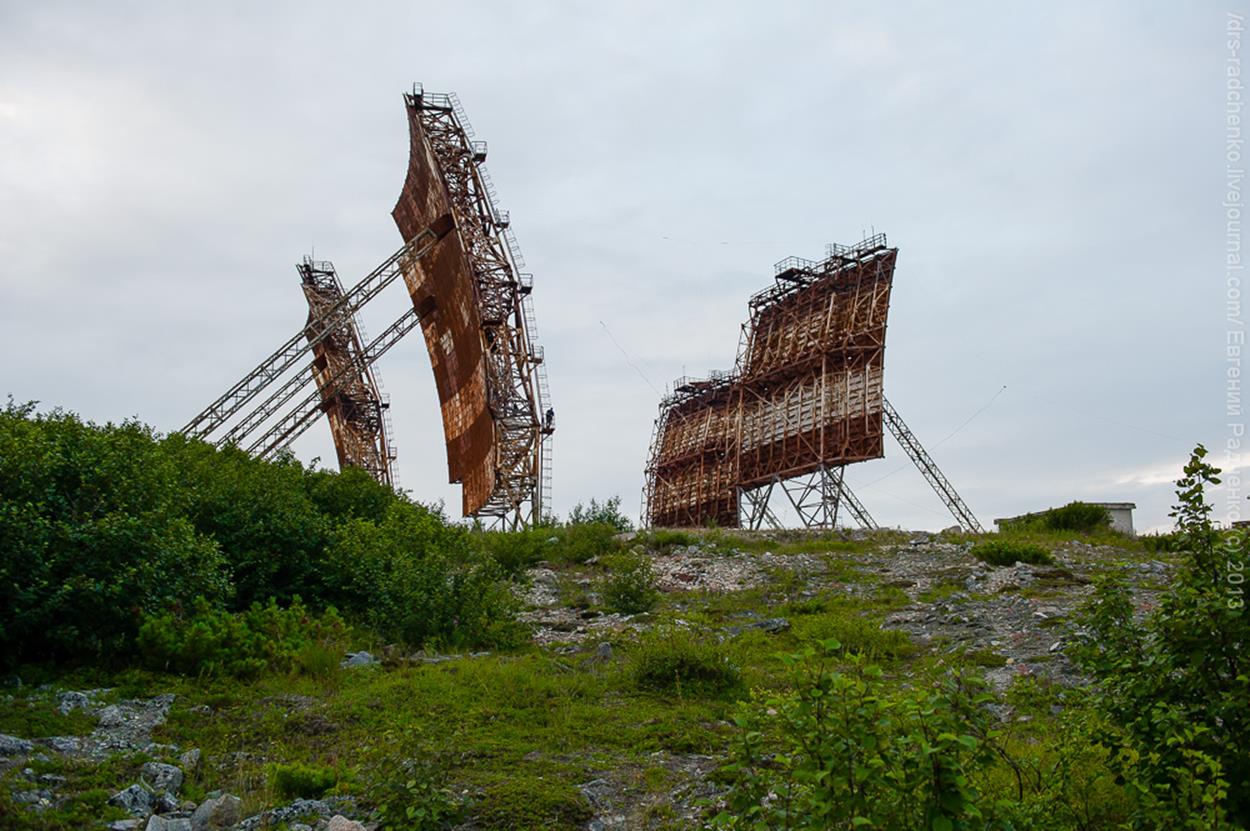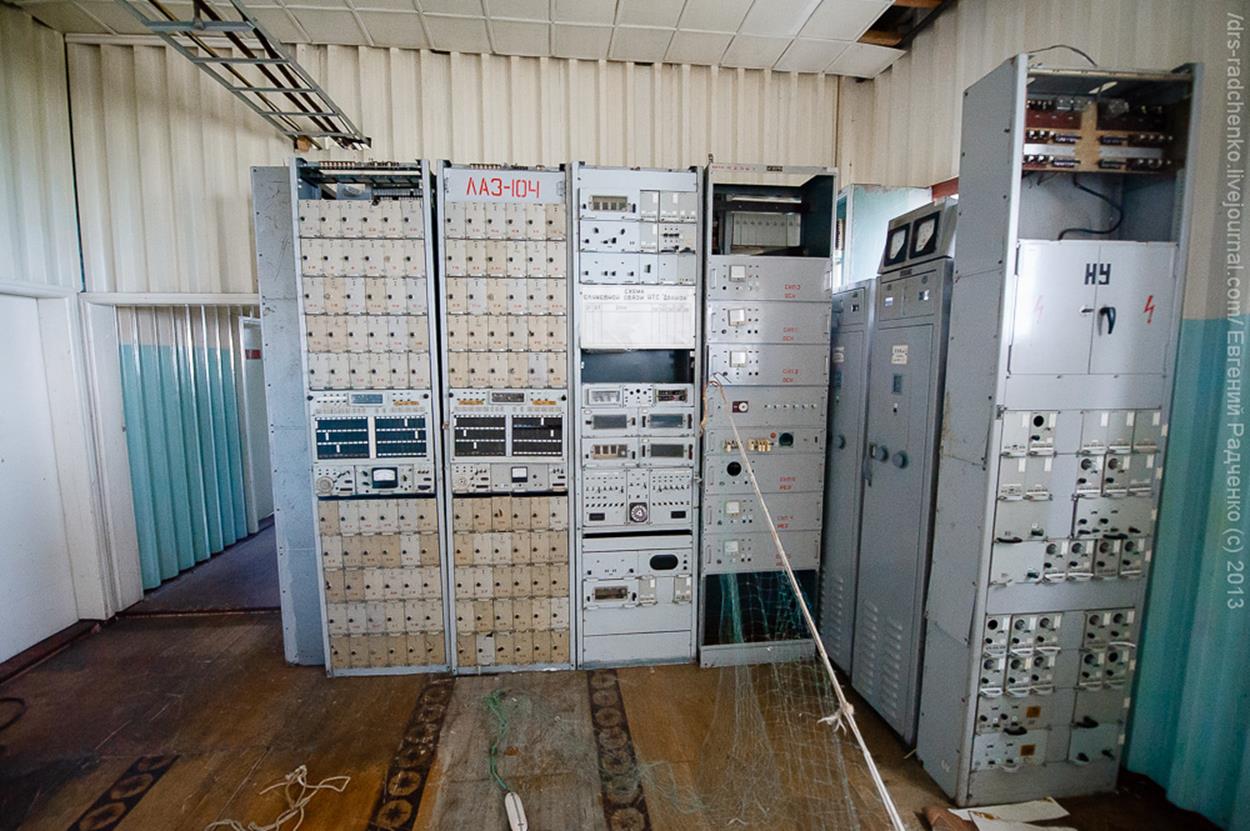A dead Dragon, or the remains of Sever TRRL
There is a landmark in the city of Magadan, a place of pilgrimage for the bored youth. These are some mind-blowingly huge red and white dish antennas at the top of a hill.
They appeared in the late 1960s and were part of the tropospheric-scatter radio relay system called “Sever” (“North”).
Sever tropospheric-scatter radio relay line (TRRL Sever) is a former Soviet communications line system designed for establishing communication with the remote regions of the country.
The line was 13200 km (8200 miles) long and consisted of 46 tropospheric radio relay stations (TRRS) located mostly along the coasts of the Arctic and the Pacific oceans and major Siberian rivers: the Ob, the Enisey and the Lena.
The system consisted of 7 communication lines and had 2 communications hubs that had subordinate centers and stations.

At the start of the system’s operation an attempt was made to employ civilian operators for servicing the lines. However, because of harsh social and living conditions at the stations’ locations and, consequently, the impossibility of employing civilian workers at most of the stations, the government were forced to involve military personnel.
The communications station 1/104A (1/104), named “Dragon”:
The checkpoint.


The garages of the former car fleet.

One pair of the mirror antennas is looking towards the town of Takhtoyamsk, and the other one towards Okhotsk.
The sizes of the antenna dishes are 30×30 m (approx. 100×100 ft) and 40×45 m (approx. 130×150 ft). There are two antennas installed for each direction.


The cafeteria building


The foundation is deteriorating.


A great view of the Nagaev Bay.





From the height of 400 m (1300 ft).

Here you can see how huge they are! The approximate width of the red and white stripes is 6m (20 ft).



I’ve seen buildings like this at arctic stations; this is probably a typical design.









This used to be an indicator panel.

It turned out there’s still life here. Andrey is currently on duty at the Dragon.
The duration of a shift is one month. He kindly invited us to come inside and take a look at the living conditions.
Sometimes bears come here in spring because they are hungry.

The living conditions are more than simple. This is what the shower looks like.

He says that the possibility of these 200 ton dishes collapsing onto his house is what he fears most. The foundation is crumbling, and the fixtures are rusty.

Andrey is content with his solitary life. He’s been working at these locations for many years and he is no stranger to it.


The Dragon station hasn’t been operational for nearly 10 years. Satellite communication channels between cities were established a long time ago.
Here are some photos from the history of the Dragon.

The staff of the military base № 74237 in the year 1970

Images by Evgeny Radchenko, reproduced with permission






